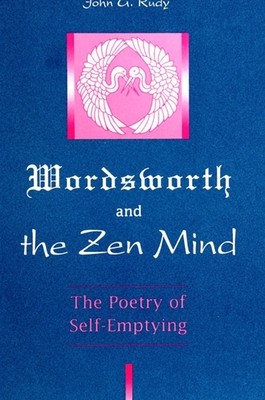
- We will send in 10–14 business days.
- Author: John G Rudy
- Publisher: State University of New York Press
- ISBN-10: 0791429040
- ISBN-13: 9780791429044
- Format: 14.9 x 22.8 x 1.6 cm, minkšti viršeliai
- Language: English
- SAVE -10% with code: EXTRA
Reviews
Description
This book demonstrates that Zen thought and art provide both a generative and a formative context for understanding the spirituality of the English poet William Wordsworth (1770--1850). Combining methods of modern literary scholarship with the philosophical initiatives of the Kyoto School, the text crosses disciplines as well as cultures, offering a nonmonotheistic, nonpantheistic philosophical ground upon which to study what Wordsworth calls the tranquil soul and the one Presence that underlies the great whole of life. Anticipating a variety of audiences, the discourse progresses from general, introductory level discussions of Zen philosophy and literature to the more technical philosophical idiom of the Kyoto School, employing intertextual readings of a variety of Wordsworthian and Zen documents to broaden and deepen the East-West dialogue as it has been unfolding since the pioneering work of D. T. Suzuki and Kitaro Nishida.
An important aspect of this study is its twofold purpose: to situate Wordsworth more centrally in the evolving global community of intercultural and interreligious communication and to demonstrate the unique flexibility and universality of Zen as a medium of spiritual growth and aesthetic understanding.
EXTRA 10 % discount with code: EXTRA
The promotion ends in 22d.15:02:23
The discount code is valid when purchasing from 10 €. Discounts do not stack.
- Author: John G Rudy
- Publisher: State University of New York Press
- ISBN-10: 0791429040
- ISBN-13: 9780791429044
- Format: 14.9 x 22.8 x 1.6 cm, minkšti viršeliai
- Language: English English
This book demonstrates that Zen thought and art provide both a generative and a formative context for understanding the spirituality of the English poet William Wordsworth (1770--1850). Combining methods of modern literary scholarship with the philosophical initiatives of the Kyoto School, the text crosses disciplines as well as cultures, offering a nonmonotheistic, nonpantheistic philosophical ground upon which to study what Wordsworth calls the tranquil soul and the one Presence that underlies the great whole of life. Anticipating a variety of audiences, the discourse progresses from general, introductory level discussions of Zen philosophy and literature to the more technical philosophical idiom of the Kyoto School, employing intertextual readings of a variety of Wordsworthian and Zen documents to broaden and deepen the East-West dialogue as it has been unfolding since the pioneering work of D. T. Suzuki and Kitaro Nishida.
An important aspect of this study is its twofold purpose: to situate Wordsworth more centrally in the evolving global community of intercultural and interreligious communication and to demonstrate the unique flexibility and universality of Zen as a medium of spiritual growth and aesthetic understanding.


Reviews